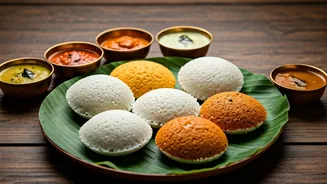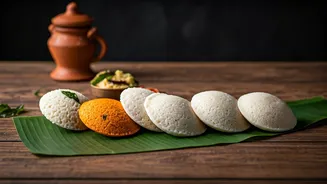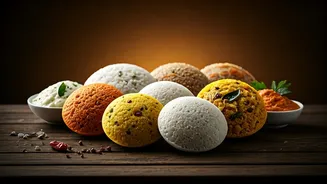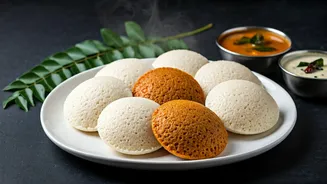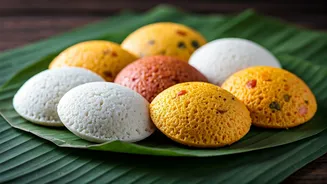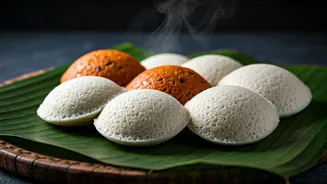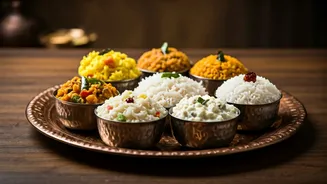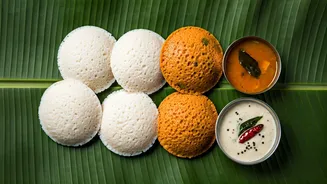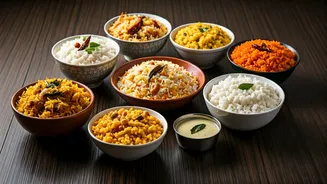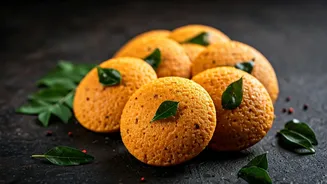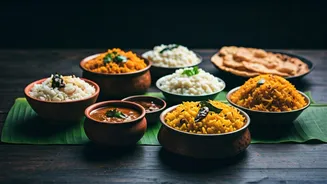The Classic: Plain Idli
Plain idli, the foundation of South Indian breakfast, is made from a batter of fermented rice and urad dal. The process begins with soaking the rice and urad dal separately,
followed by grinding them into a smooth batter. After fermentation, the batter is steamed, resulting in a soft, fluffy idli. It’s typically served with sambar and chutney. The perfect plain idli balances a slightly tangy taste from fermentation with a neutral flavor profile that complements the accompanying dishes. The key to the ideal texture is a well-fermented batter and correct steaming time, guaranteeing a light and airy result every time.
Sambar Idli: Flavored Version
Sambar idli, a variation of the plain idli, involves preparing the idli batter with sambar ingredients. Sambar is a lentil-based vegetable stew. The ingredients for the batter include sambar powder, vegetables, and lentils like toor dal. The flavor profile is enhanced with aromatic spices and herbs, delivering a unique taste. Upon steaming, the idlis absorb the flavors, creating a dish packed with the vibrant essence of sambar. The textures are both soft and flavorful, blending perfectly with a spicy and aromatic experience, differing from plain idli.
Rava Idli: Semolina Delight
Rava idli offers a distinct texture, made from semolina (rava), yogurt, and a blend of spices. This variety doesn't require fermentation, making it a quick option. The semolina is roasted for enhanced flavor, then mixed with yogurt to provide moisture. Spices, such as mustard seeds, curry leaves, and green chilies, add depth to the dish. The idli batter is then steamed, giving it a slightly grainy texture compared to rice-based idlis. This variety is often served with coconut chutney and a side of sambar, adding a delightful twist for anyone who wants to try something different from the classic idli.
Kanchipuram Idli: Aromatic Speciality
Kanchipuram idli, a specialty from Tamil Nadu, is known for its rich flavors and aromatic profile. The idli batter includes ingredients like ginger, asafoetida, and cumin. The dish is traditionally prepared with a generous inclusion of these spices, enriching the flavor. The ingredients are incorporated, and the batter is steamed, typically in a muslin cloth. The aroma and flavor are unparalleled. This variation is also characterized by its use of curry leaves and cashew nuts, giving it a distinctive character that distinguishes it from other idli types, offering a blend of aroma and texture.
Thatte Idli: The Plate Idli
Thatte idli, literally meaning 'plate idli,' gets its name from its distinctive shape. This variant is notably larger and thicker than standard idlis, as it is steamed on a plate. The batter composition is the same as plain idli, but the method creates a different texture and eating experience. The thick, spongy idli is typically served with sambar and chutney, providing a hearty and satisfying breakfast. This idli type offers a more substantial portion and a unique soft texture, making it a favourite for those wanting a filling meal.
Mini Idli: Cute and Delicious
Mini idlis are an adorable version, perfect for snacking or serving a crowd. These are made from the same batter as plain idli but are steamed in smaller molds. The small size makes them ideal for dipping into sambar or chutney. They are often served as a part of a larger breakfast spread, offering variety and fun. The bite-sized portions cook more quickly and provide a convenient way to enjoy the classic taste. Mini idlis are a delightful change for any idli lover.
Idli with Variations
Idli has endless variations that are being tried and tested constantly, by home chefs and restaurants. Various flours can be incorporated into the batter, such as ragi, oats, or even millets. The incorporation of spices, vegetables, and dry fruits also adds to the variety. These ingredients add flavor, texture, and nutritional value. The methods of serving also add to the creative twist, which includes options like idli fry or idli Manchurian. This makes idli a versatile dish that continues to evolve, catering to diverse palates.
